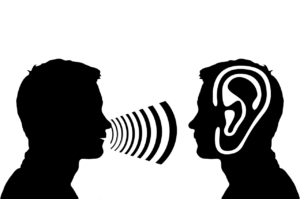I want to practise listening and understand Czech
Do you have a problem understanding when the Czech people speak? Then you need to practice listening. But where? If you have lessons tell your teacher and he/she will help you. If you study by yourself here are some tips on where to find good records.
Czech listening
1. Audio belonging to study books (A1–B1)
Start with these records. I suppose many of you use books Česky krok za krokem or Čeština expres. Here are the records (part Zvukové nahrávky): click on your book and listen to what you have been learning. 5 times, 8 times, 10 times… so many times you need. Repeat words and sentences loudly. In the book, there are transcripts (texts) when you don´t understand you can read. When you understand well go on to the next record.
2. Výuková videa (A1–A2)
Short videos for 15 basic situations. 2 videos for each situation: for A1 students and A2 students. Topics: living, how to call an emergency, how to make an appointment with the doctor, how to call the police, how to fill in the form…Each video can have subtitles and transcription (when you don´t understand you read). 
3. Forvo (A1–C2)
In this program, you can listen to Czech words and their pronunciation. You write a word, see how many people have made the audio, and start listening. When you can´t find the word you can write it to the „waiting“ list. Another user will find it, make the audio, you will receive an e-mail and can listen. Try to write e.g. Dobrý den and you will see…
4. Čeština do práce (A1–B1)
Are your colleagues the Czechs? Have a look at short videos – basic situations at work. Topics: interview, how to ask, how to apologize, how to disagree… Each video has a transcription and a few exercises to check whether you understand well.
And here is my video on how to use this web Čeština do práce.
5. Krátké české zprávy (A1–B1)
Do you want to know news from the Czechia but the radio or TV speaks too fast? Listen to the short Czech news. You can also see Czech subtitles they will help you to understand. Every week a new podcast!
6. Adapted reading and audio (A2–B2)
Read and listen. You can find books – adapted reading suitable for students of Czech. There are stories or short novels in simplified Czech. Every book includes a record as well. You read the book and then listen to the text and repeat. All the adapted books for students-foreigners are here.
7. Minutové hry (A2–C2)
You don´t have time for a long video? Listen to the short audio! Here are radio dramas, not longer than 1–2 minutes. The drama has a plot, it can be funny, sad, psychological… Each drama has also transcription. You can listen to informal Czech as well. For example, listen to the drama called Chutnalo ti to?
8. Český rozhlas (B2–C1)
Are you an advanced student? Then listen to the original records. But choose the audio of high quality. You can find them on the Czech radio broadcasting web. It contains many topics and also podcasts. Choose a topic you like. You can subscribe for news as well.
9. Česká televize (B2–C1)
The website of the Czech television will be also useful for advanced students. I recommend ČT24 – news, sport, culture, politics, economics, science, the Czech Republic, abroad… And pay attention to the website iVysílání as well: here you can find serials, films, documentary films…
10. YouTube and serials (B2–C1)
Lucie Gramelová, a language mentor and lecturer, recommends working with YouTube videos and finding e.g. serials. I add another source of them: Česká televize. You can choose the original Czech or foreign serials in iVysílání. They „speak“ Czech and you can use subtitles as well.
11. Handouts (A1–B2)
It´s good to practice listening together with other activities (reading, speaking, writing). Choose any of my handouts due to your level and practice listening to a story.
Have you chosen your channel for listening? Which one? Or do you have your own popular? Write me I am curious.
This article is in the Czech version.
13th November 2018





Thank you, very helpful, some resources I already knew about, some I didn’t and I’m glad I found them. On Česká televize I like to watch children videos in Czech, they are easy to understand even if you are beginner.
Some other resources:
https://www.umimecesky.cz/, (Czech exercises),
https://prirucka.ujc.cas.cz/ (Grammar reference),
https://www.databazeknih.cz/eknihy-zdarma-ke-stazeni (E-books in Czech for free, you need to log in to download)
Nice to hear, Ilya. Good luck with Czech!